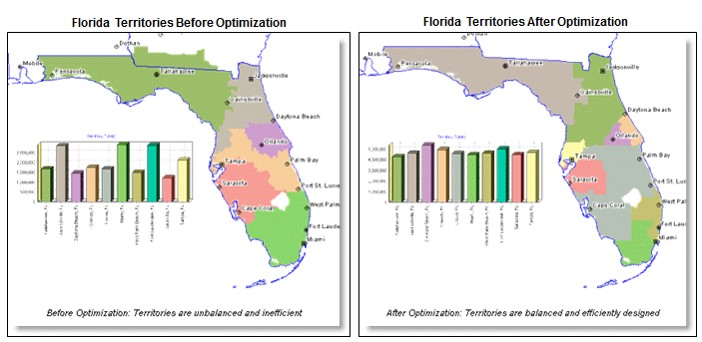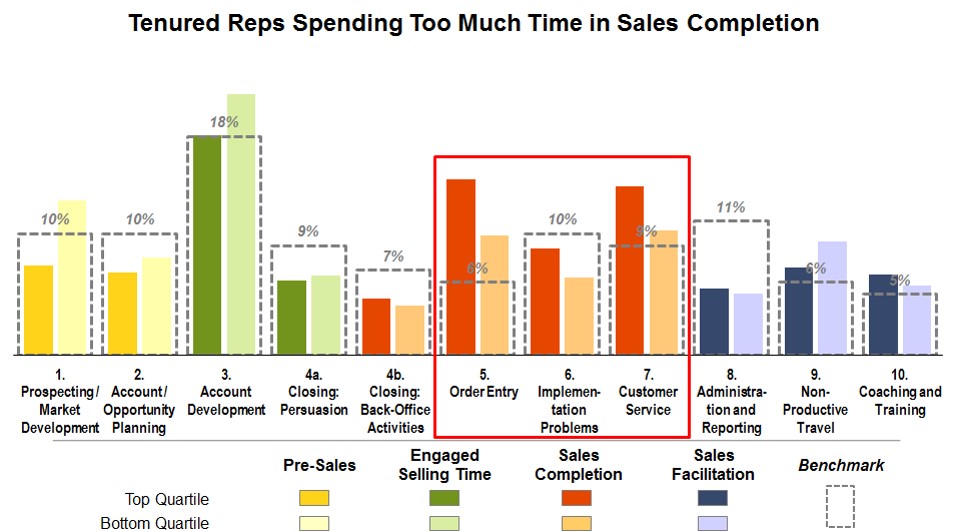Analytics in Action: a manufacturing company chooses growth over cutbacks
As the manufacturing industry continues to transform, leading organizations are adapting their sales models to the increased demands of tomorrow’s customer. In this edition of our blog series Analytics in Action, we look at a company embarking on this transformation. Frustrated after several years of mediocre growth, the company brought in new leadership as a catalyst for change. Management invited the Alexander Group to serve as a partner to both accelerate revenue growth in the near term and lay the foundation for long-term success.
As a mid-sized player in a slow growth and consolidating market, the company found itself consistently losing market share and missing even modest growth targets. After a careful review of the business, the new leadership team concluded that higher growth rates would require a rethinking of the sales force and go-to-customer model. The company asked the Alexander Group to evaluate the company’s go-to-customer practices and the joint project team identified 10+ high impact improvement opportunities for both short- and long-term implementation. We examine four of the foundation opportunities below.
Grow, don’t cut
An analysis of the company’s sales investment levels found that total sales expense per rep was ~30 percent less than the industry benchmark. However, low sales productivity drove Expense to Revenue to more than 2X the industry benchmark. Given management’s focus on growth, the project team was encouraged to focus on opportunities to increase and support rep productivity rather than cut costs.
1. It’s still all about time
How salespeople spend their time is a critical determinant of productivity. The new leadership team was concerned that reps spent too much time on low value activities. And they were right. An average of 25 percent was being spent on order entry and issue resolution (see Figure 1). Surprisingly, the higher performing reps (represented by the top quartile in Figure 1) spent more time than their less productive counterparts on sales completion activities. Reflected in this discrepancy was the simple fact that the higher performing reps were working more hours per week (approximately 15 percent more on average).
Similarly, salespeople entered their own orders the majority of the time. Order entry and other non-sales activities were effectively stealing valuable time from real selling activities (e.g., account development and persuasion). By redesigning the sales process with an emphasis on Engaged Selling Time, management had a viable opportunity to substantially increase rep productivity.
2. More tenure = richer territory = coverage gaps
Over time, the company had institutionalized a major imbalance in customer assignments and territories. Tenured reps developed the “richest” territories over years of account acquisition and retention. Those tenured salespeople could not cover or manage all of the available opportunities. The most tenured reps brought in the most revenue, but also had significantly more accounts. These tenured reps were also losing market share. Less tenured salespeople were assigned smaller, less lucrative territories with less opportunity for growth. A more balanced territory design would increase sales capacity and performance transparency (see Figure 2).
Figure 2
3. Coverage gaps result in increased revenue churn
To maximize rep productivity, sales reps need to focus on the right accounts. After analyzing four revenue segments, the team found that 90 percent of the customers were responsible for just 20 percent of revenue. Perhaps more importantly, the small accounts in segment four were the only customers exhibiting growth. Managing many small accounts requires significant effort, and consequently optimal coverage, to be effective. The excessive amount of time spent on the smaller accounts inhibited growth in two of the core revenue segments, within which the company was losing a substantial amount of business from existing customers. A deadly combination of high revenue churn rate (~30+ percent) and low penetration rates resulted in negative revenue growth. Redesigned job roles and a new sale process would shift focus from small accounts to growing penetration in the core segments two and three.
4. Rethink legacy compensation approaches
Effective sales compensation plans align strategy, focus activity and drive sales productivity. Analysis of the sales compensation plan design, reinforced by a field feedback survey, showed that the plan was poorly aligned to business objectives and failed to motivate new revenue growth. This finding, combined with non-competitive benchmark pay levels and a less aggressive pay mix than industry practice (83/17 pay mix versus the industry practice of 60/40), supported the need for change in philosophy and increased emphasis on pay for performance.
Investing for Growth
The project team ultimately recommended a set of two transformation action plans. The first action plan focused on minimizing disruption to the sales force and maximizing a rapid return on marginal investment. The second focused on building a comprehensive new sales model and long-term growth potential.
Is it time to rethink your go-to-customer practices and reinvigorate your growth prospects? Contact us to learn how Alexander Group can help.
Original author: Greg Ketchum.
